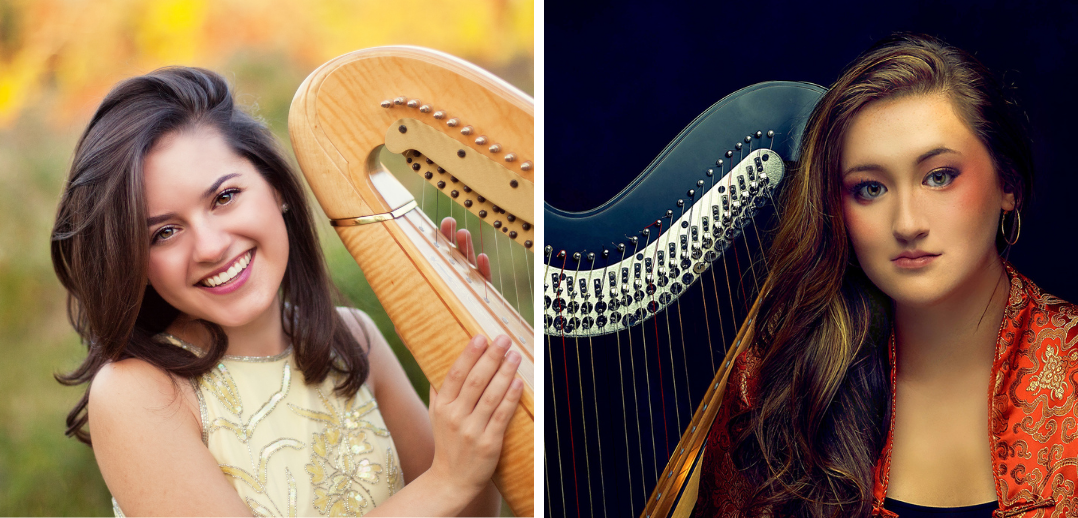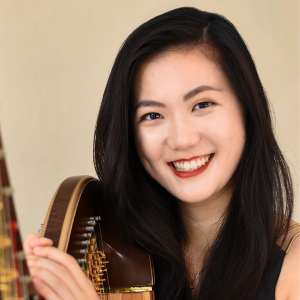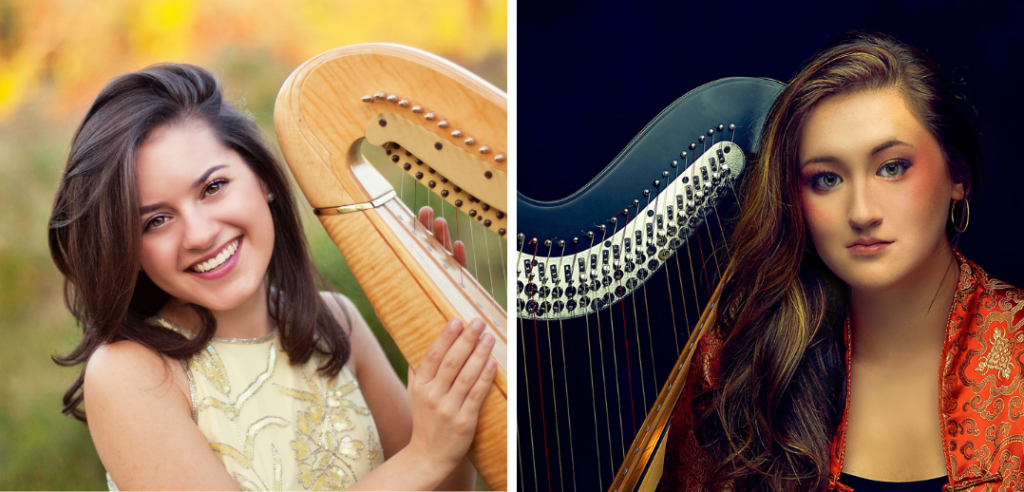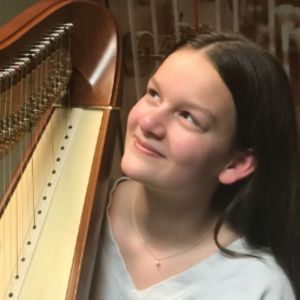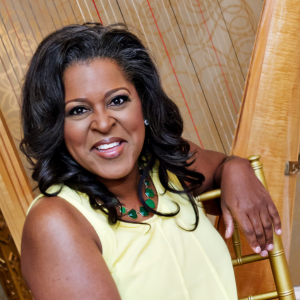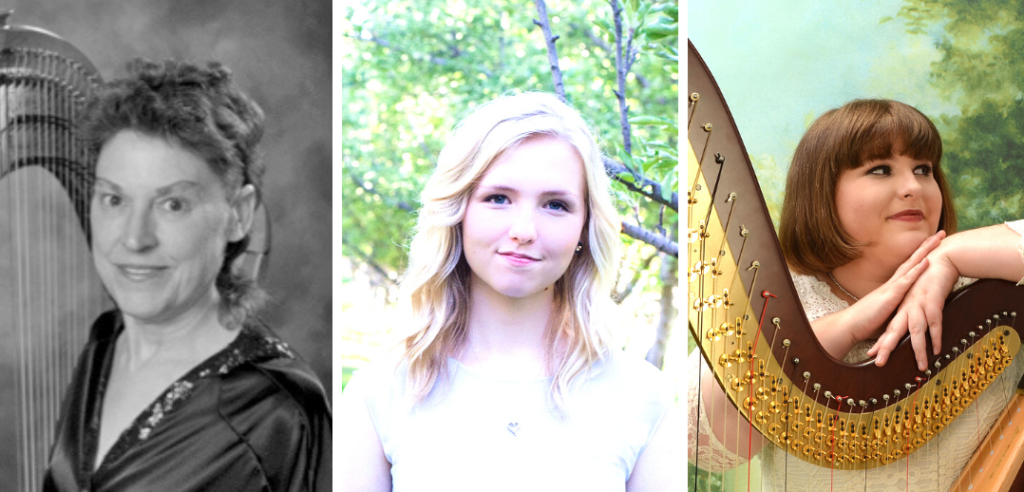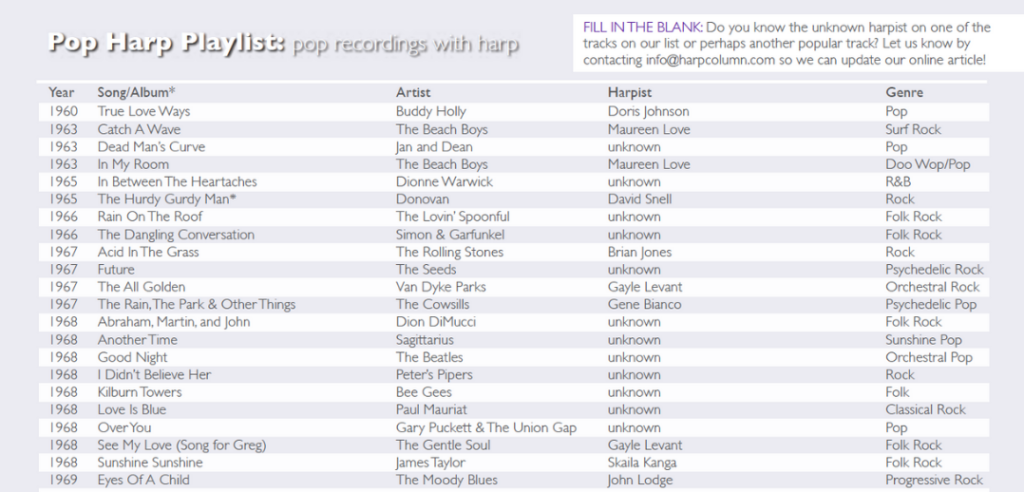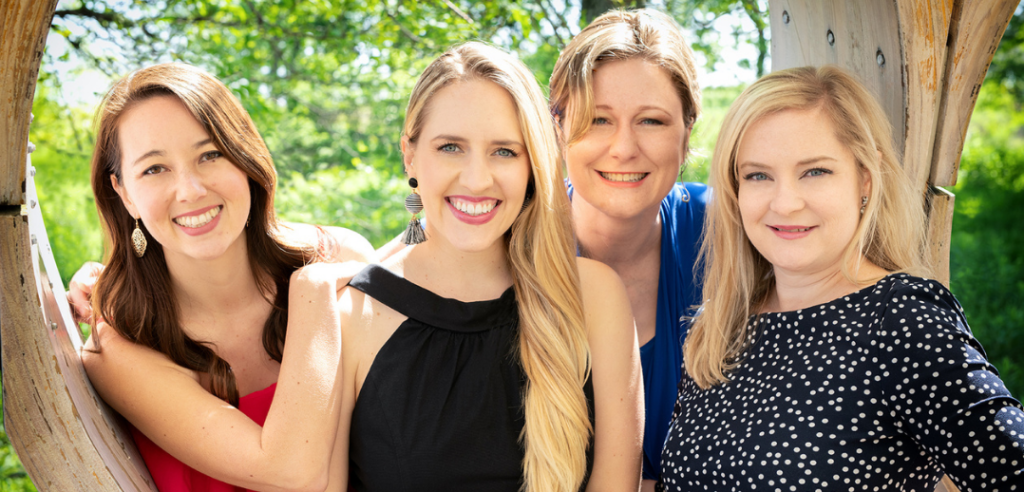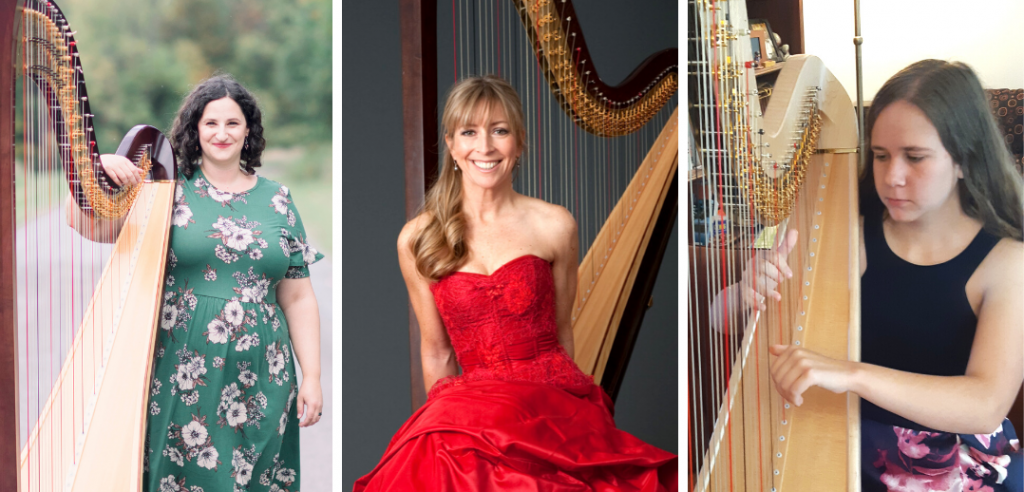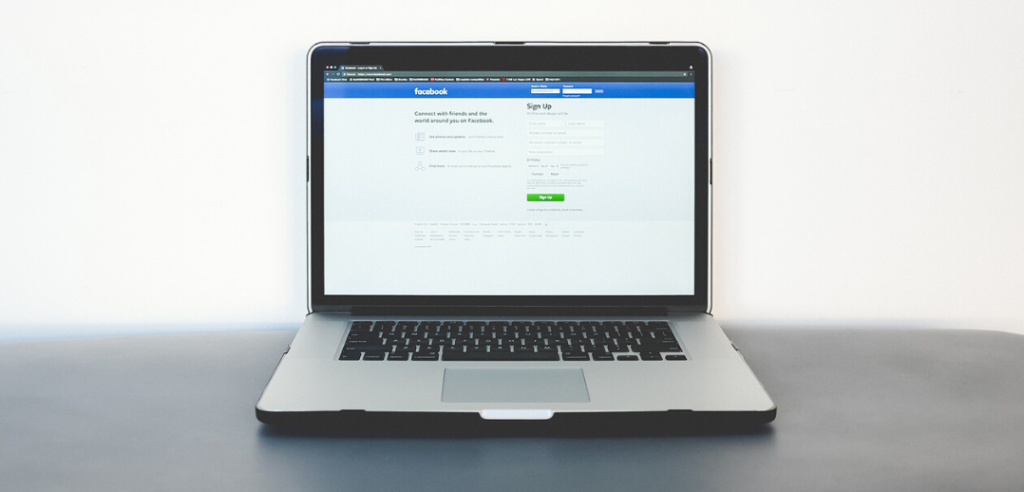This article extra is part of the feature article Playing Second Fiddle in this issue.
Helen Liu Gerhold
Where do you play Harp 2?
I often play second harp with The Philadelphia Orchestra and occasionally with Metropolitan Opera Orchestra.
When playing Harp 2, what are some guidelines that you live by?
Knowing what their fingerings are, exactly how they’re placing their hands on the strings, articulating each note, muffling, and raising (or not raising!) not only looks cohesive visually, but also makes a massive difference in timing accuracy and musicality.
I think some guidelines may depend on if I’m doubling or playing a separate part; however, overall, I’m constantly listening and using my peripheral vision. Especially when I’m doubling the Harp 1 part, I often tend to play very slightly under the principal harpist in volume. (Of course in Harp 2-only sections I don’t do this.) Playing slightly under gives me the chance to understand physically and musically what the principal harp is doing. Knowing what their fingerings are, exactly how they’re placing their hands on the strings, articulating each note, muffling, and raising (or not raising!) not only looks cohesive visually, but also makes a massive difference in timing accuracy and musicality. I think it also signals to the conductor, orchestra, and principal harpist that you’re ready and willing to be flexible to support their artistic vision.
Once I have my Harp 2 part, I also tend to mark the harp 1 part into mine. I want to know exactly what Harp 1 is playing so I can fit more seamlessly into the principal harp’s (and the orchestra and conductor’s) part(s).
Establishing a good rapport to build trust with the principal harp (and of course, the orchestra!) is also necessary. Flimsy relationships between musicians often show in the music. Trust is the foundation for any team to work.
In what ways is playing Harp 2 different than playing principal?
Harp 2 has a few challenges that I like to think of as fun opportunities. First, because there tends to be no official second harp position in orchestra, we are often faced with playing in several different orchestras, with different styles of playing, timing, and with different conductors. It’s exciting to have the opportunity to surround, understand, then acclimate myself to orchestras with varying traditions, musicality, and approaches to music.
We also face a challenge of fully understanding the principal’s musical vision, then applying it to our part. I try to listen and react to the principal harp’s playing with empathy. Through sensitively watching out of the corner of my eye and listening to the principal harp, I try to embody the physical, emotional, and musical characteristics of the principal harpist. This allows me to understand the rationale behind their musical choices, then anticipate and react appropriately, even if they slightly vary throughout the week.
These challenges ultimately broaden my exposure to a wider array of musical possibilities and interpretations, offering the chance to explore musical dimensions I may not have previously contemplated.
What is your favorite Harp 2 part to play?
One of my favorites is Tchaikovsky’s Manfred Symphony Op. 58, which I unfortunately don’t see programmed very often. It has a number of harp solos and a gorgeous solo duet in the fourth movement that is gratifying to play!
I also enjoyed playing Kevin Puts’ new opera The Hours with both The Philadelphia Orchestra and the Met Opera. The two harp parts are pretty constant throughout, and when put together, they fit so perfectly. I think he uses the harps really well to create a wind chime effect in the beginning of the second act. (I also may tear up at the end because it’s just so beautiful!)
What is a favorite memory from playing in a section?
One of my favorite memories is performing Mahler 8, “Symphony of a Thousand,” with four harps in The Philadelphia Orchestra under Yannick Nézet-Séguin as second harp section leader in 2016. I will always remember soprano, Lisette Oropesa, singing so stunningly from the balcony right next to me.
Final thoughts about playing Harp 2?
Playing Harp 2 has made me a far better principal, solo, and chamber harpist. It’s an invaluable experience! •
Krysten Keches
Where do you play Harp 2?
When I’m preparing a second harp part, I always mark harp 1 entrances in my own music and play through the first harp part so that I have a complete understanding of how the two parts fit together.
I’m a freelance harpist and harp teacher based in Boston, Massachusetts. I’ve been playing regularly as a second and substitute principal harpist with the Boston Symphony Orchestra and the Boston Pops Orchestra since 2014. I’m incredibly grateful to BSO principal harpist Jessica Zhou for trusting me over the years and for teaching me so much about orchestral playing. I always tell my students that I learned how to listen in the deepest, most profound sense by sitting next to Jessica, experiencing her sound and her utter sensitivity to the sound of the musicians around us.
When playing Harp 2, what are some guidelines that you live by?
When I’m preparing a second harp part, I always mark harp 1 entrances in my own music and play through the first harp part so that I have a complete understanding of how the two parts fit together. It goes without saying that I listen to multiple recordings and study the score to hear how the two harp parts interact with the rest of the orchestra. If I have any specific questions for the principal harpist, I make a list and address them before the first rehearsal.
When preparing a particularly challenging piece, I like to record myself playing harp 1 and then practice playing Harp 2 along with my recording. This strategy is especially helpful when working on something like the fifth movement of Bartok’s Concerto for Orchestra. At rehearsal 96, Harp 2 plays offbeats while Harp 1 has the big beats. Some harpists choose to combine the two parts into alternating eighth-note chords for this section, but if you do it as written, it can fall apart in an instant if the second harpist isn’t totally secure.
In what ways is playing Harp 2 different than playing principal?
I think when you’re playing second harp, you have to be even more flexible and sensitive than when you’re playing principal. In my mind, my first priority as a second harpist is to be in sync with Harp 1. In order to do this, I have to know my own part extremely thoroughly so that I can spend more of my energy listening and picking up on the nuances that Harp 1 is communicating. I often find that slow passages are harder to nail than fast ones in terms of ensemble. The harp produces such an instantaneous sound, so it’s immediately obvious when a shared note or chord isn’t exactly together.
What is your favorite Harp 2 part to play?
It’s so hard to choose a favorite second harp part, but I always love playing Ravel’s Daphnis and Chloe and Bartok’s Concerto for Orchestra. Both of those pieces were on the last BSO program I played in 2020 right before Covid shutdowns began, so that week of performances ended up being extra memorable for me. Berlioz’s Symphonie Fantastique and Debussy’s La Mer are always a joy. Recently I played Harp 2 on Holst’s The Planets for the first time, and I really enjoyed experiencing that piece from a different angle.
What is a favorite memory from playing in a section?
I love Mahler, so some of my favorite moments with the BSO have revolved around his symphonies. I’ve gotten the chance to perform Mahler [Symphony No. 6] at Carnegie Hall, Tanglewood, on tour in Europe, and at home at Symphony Hall, and playing that piece (and bracing myself for the epic hammer blows happening right next to me) is always a thrill!
Final thoughts about playing Harp 2?
This may be somewhat obvious, but I think it’s important to have open communication with the principal harpist about things like instrument positioning and tuning. Does the principal harpist prefer to sit on the inside or the outside? Do they like to sit slightly forward? When and where do they like to tune? When I’m playing second harp, I usually arrive even earlier than I normally would so that the principal harpist and I both have ample time to tune alone. Understand the principal harpist’s preferences and be flexible so that you can both play your best. Being a good colleague starts with these basics! •






